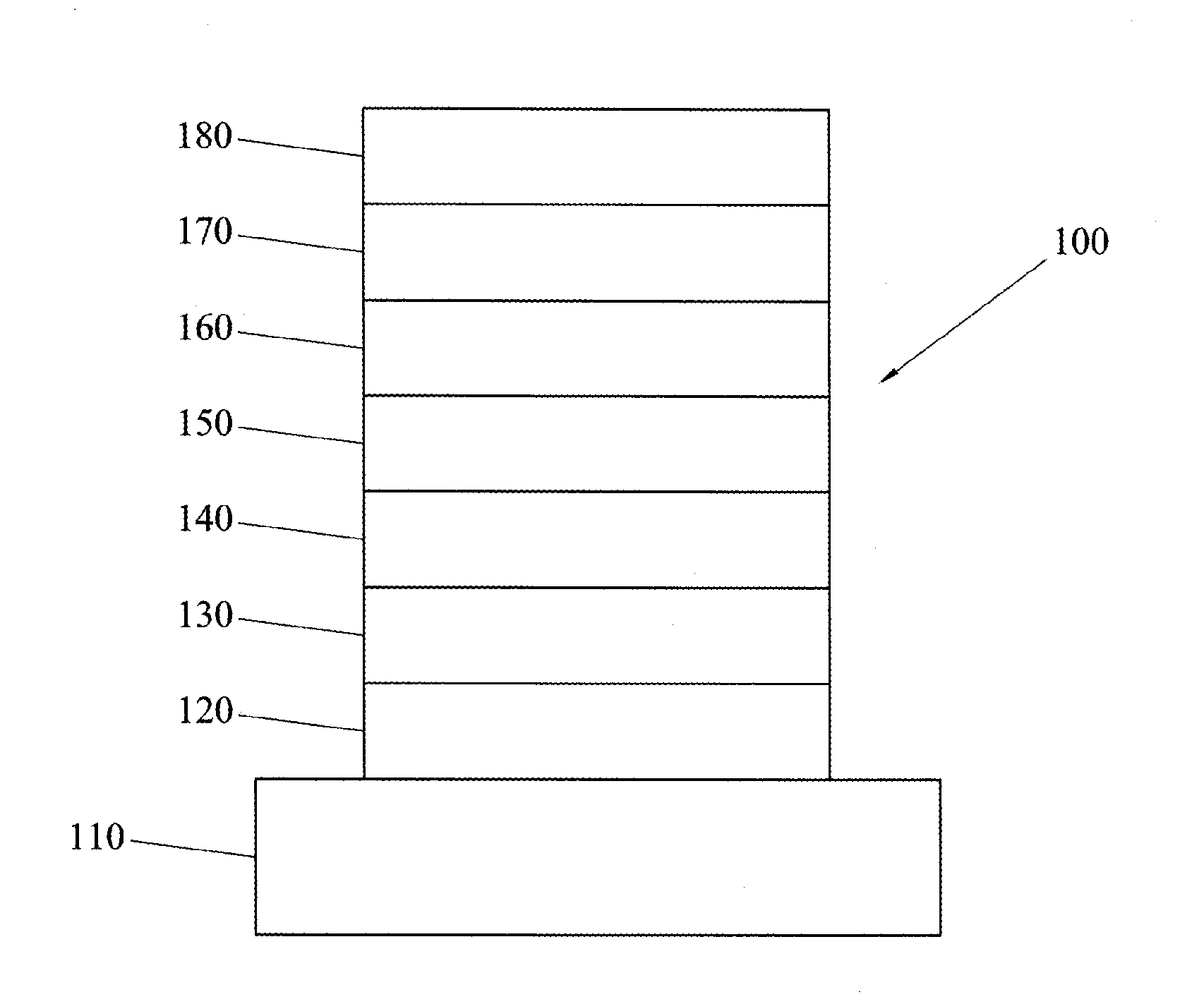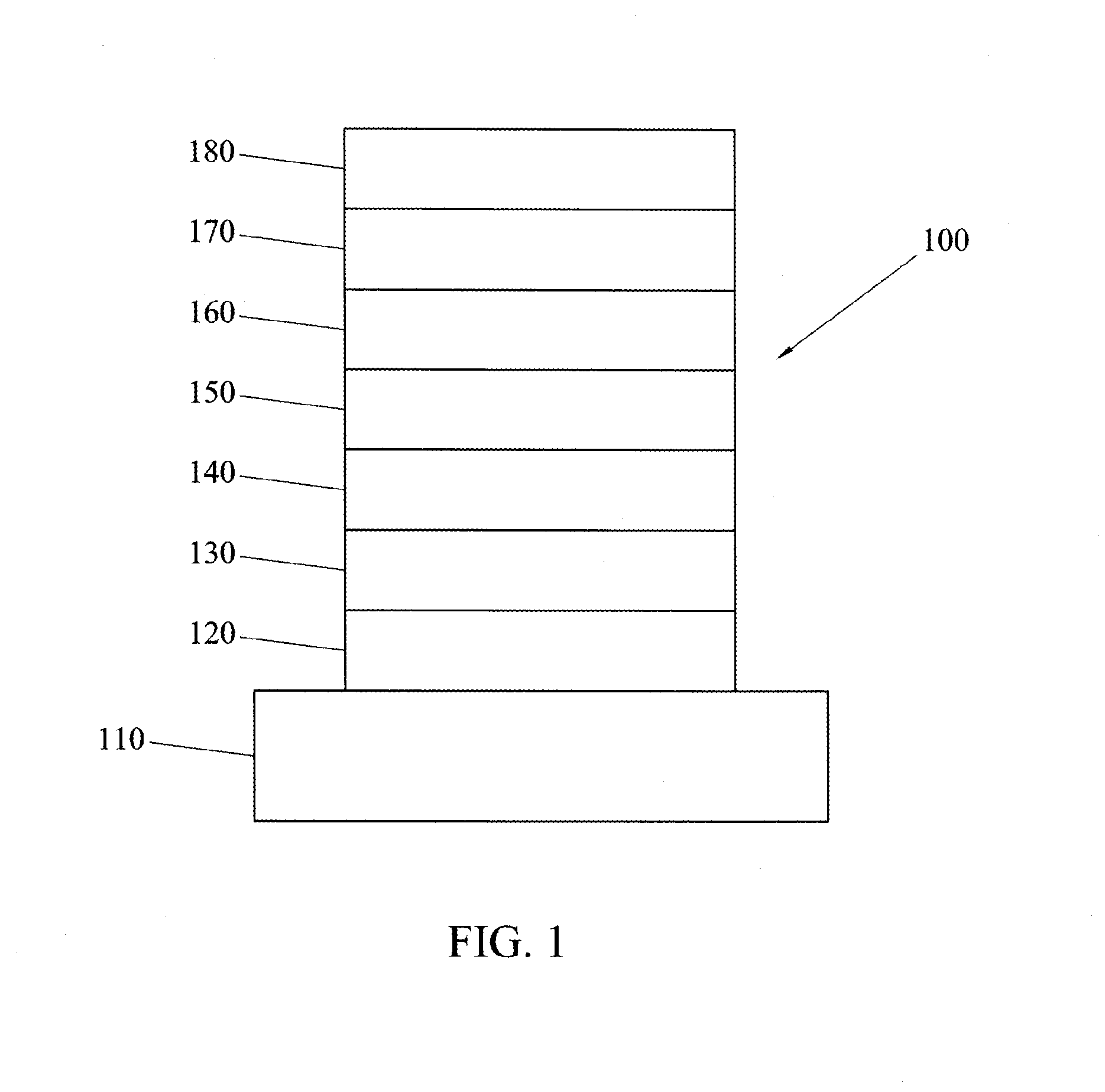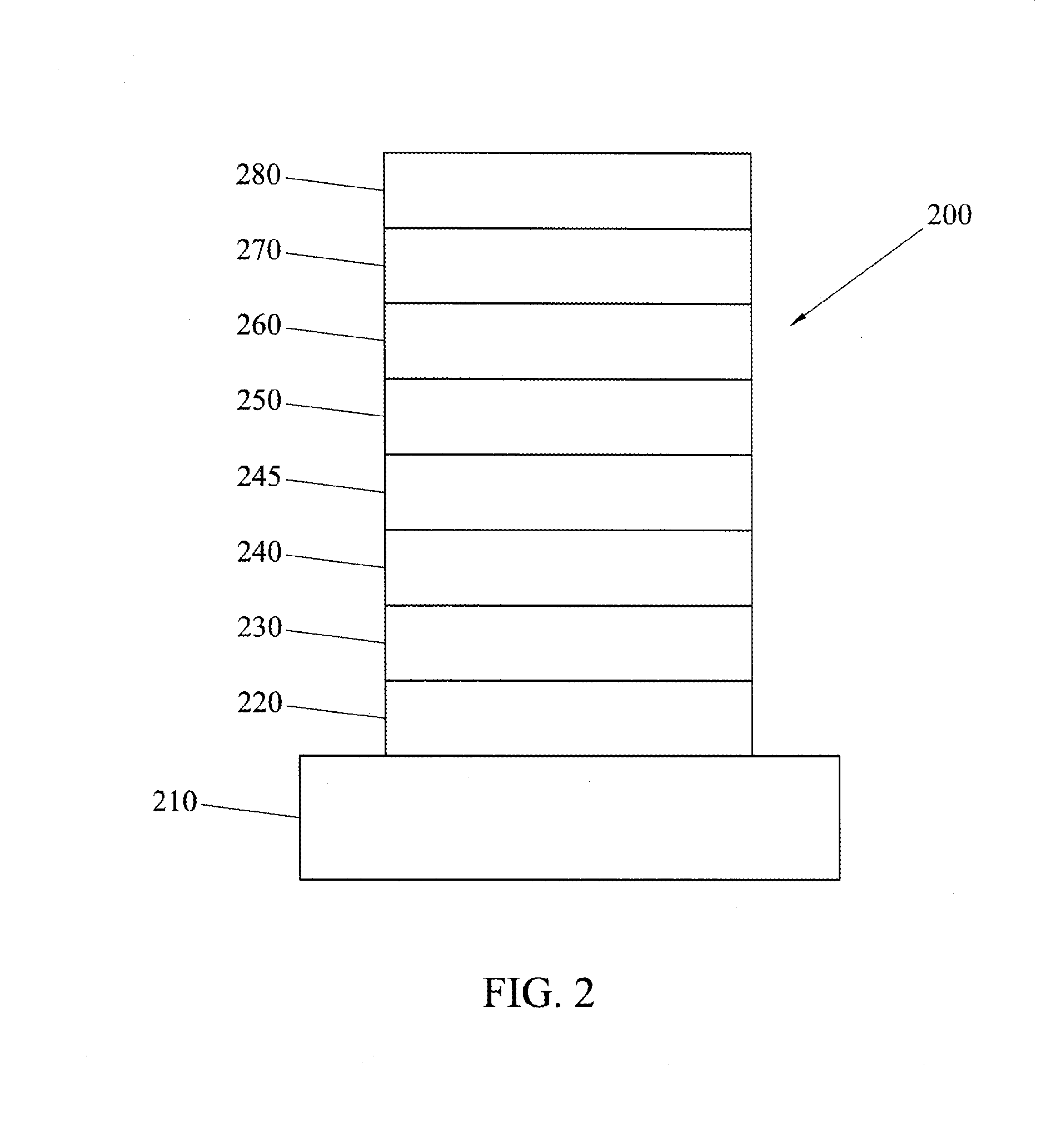Electron transporting compounds and organic electroluminescent devices using the same
a technology of electron transporting compounds and organic electroluminescent devices, which is applied in the direction of solid-state devices, semiconductor devices, thermoelectric devices, etc., can solve the problems of tpbi having lower operational stability, materials also lack operational stability, and it is difficult to find organic materials that meet all the requirements for use in practical display applications. achieve the effect of prolonging lifetime stability and reducing operational voltag
- Summary
- Abstract
- Description
- Claims
- Application Information
AI Technical Summary
Benefits of technology
Problems solved by technology
Method used
Image
Examples
synthesis example 1
Synthesis of Compound B
[0044]In a 1 L flask, a mixture of 3-bromo-7,12-diphenylbenzo[k]fluoranthene (20 g), (4(1-phenyl-1H-benzo[d]imidazol-2-yl)phenyl)boronic acid (15.6 g), tetrakis(triphenylphosphine)palladium (2.40 g), toluene (300 ml), ethanol (150 ml) and 2M aqueous solution of potassium carbonate(72.4 ml) were added together, and refluxed for 16 hr. The reaction was quenched with water and the toluene layer was removed and washed with brine and dried with anhydrous sodium sulfate, and the solvent was removed under reduced pressure to yield 2-(4-(7,12-diphenylbenzo[k]fluoranthen-3-yl)phenyl)-1-phenyl-1H-benzo[d]imidazole (compound B, 5.3 g) as a light yellow solid.
[0045]1H NMR (CDCl3, 6): 7.92 (d, 1H), 7.77(d, 1H), 7.71-7.62 (m, 10H), 7.60-7.55 (m, 4H), 7.55-7.52 (m, 1H), 7.52-7.49 (m, 1H), 7.48-7.44 (m, 2H), 7.43-7.39 (m, 4H), 7.38-7.34 (m, 1H), 7.32-7.25 (m, 5H), 6.64 (d, 2H).
synthesis example 2
Synthesis of Compound C
[0046]3-bromo-7,8,9,10-tetraphenylfluoranthene was synthesized following the procedure cited in New Journal of Chemistry, 2010, 34, p. 2739.
[0047]3-bromo-7,8,9,10-tetraphenylfluoranthene (20 g), (4-(1-phenyl-1H-benzo[d]imidazol-2-yl) phenyl)boronic acid (12.88 g), tetrakis(triphenylphosphine)palladium (1.97 g), toluene (300 ml), ethanol (150 ml) and 2M aqueous solution of potassium carbonate (59.8 ml) were added together, and refluxed for 16 hr. The reaction was quenched with water and the toluene layer was removed and washed with brine and dried with anhydrous sodium sulfate, and the solvent was removed under reduced pressure to yield 1-phenyl-2-(4-(7,8,9,10-tetraphenylfluoranthen-3-yl)phenyl)-1H-benzo[d]imidazole (Compound C, 14.6 g) as a light yellow solid.
[0048]1H NMR (CDCl3, 6): 7.90-7.96 (m, 2H), 7.80 (m, 2H), 7.70 (m, 2H), 7.58 (s, 1H), 7.46-7.55 (m, 12H), 7.30-7.32 (m, 13H),7.22-7.26 (m, 6H).
synthesis example 3
Synthesis of Compound A
[0049]3-bromo-7,10-diphenylfluoranthene was synthesized following the procedure given in the Journal of the American Chemical Society, 1993, 11, p. 11542.
[0050]3-bromo-7,10-diphenylfluoranthene (20 g), (4-(1-phenyl-1H-benzo[d]imidazole-2-yl)phenyl)boronic acid (17.40 g), tetrakis(triphenylphosphine)palladium (2.67 g), toluene (300 ml), ethanol (150 ml) and 2M potassium carbonate (80.8 ml) were added together, and refluxed for 16 hr. The reaction was quenched with water and the toluene layer was removed and washed with brine and dried with anhydrous sodium sulfate, and the solvent was removed under reduced pressure to yield 2-(4-(7,10-diphenylfluoranthen-3-yl)phenyl)-1-phenyl-1H-benzo[d]imidazole (compound A, 17.8 g) as a yellow powder.
[0051]1H NMR (CDCl3, 8): 7.92-7.96 (m, 2H), 7.70-7.80 (m, 4H), 7.58 (s, 1H), 7.53-7.55 (m, 6H), 7.47-7.49 (m, 4H), 7.28-7.32 (m, 9H), 7.22-7.26 (m, 4H).
PUM
 Login to View More
Login to View More Abstract
Description
Claims
Application Information
 Login to View More
Login to View More - R&D
- Intellectual Property
- Life Sciences
- Materials
- Tech Scout
- Unparalleled Data Quality
- Higher Quality Content
- 60% Fewer Hallucinations
Browse by: Latest US Patents, China's latest patents, Technical Efficacy Thesaurus, Application Domain, Technology Topic, Popular Technical Reports.
© 2025 PatSnap. All rights reserved.Legal|Privacy policy|Modern Slavery Act Transparency Statement|Sitemap|About US| Contact US: help@patsnap.com



